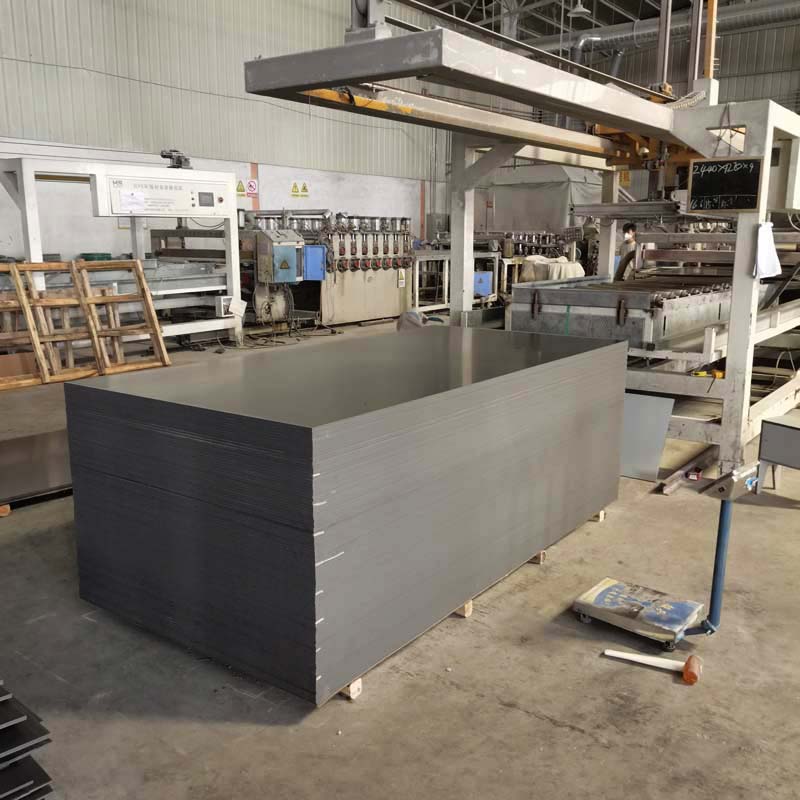PVC (Polyvinyl Chloride) plastic sheets are widely used in various industries for their durability, versatility, and cost-effectiveness. They can be used for a multitude of applications, such as signage, construction, packaging, and even in the medical field. If you are interested in pouring PVC plastic sheets, this article will guide you through the process step by step.
Before we begin, please note that pouring PVC plastic sheets requires specific equipment and materials to ensure safety and quality. It is essential to follow proper safety precautions and have a well-ventilated area for this task.
Materials and Equipment Needed:
1. PVC resin: This is the raw material used to make PVC plastic sheets.
2. Plasticizer: It enhances the flexibility and durability of the PVC sheets.
3. Stabilizers: These additives help prevent degradation of the PVC resin during the pouring process.
4. Pigments: If desired, pigments can be added to the resin to achieve the desired color.
5. Mixing container: A vessel to mix the PVC resin, plasticizer, stabilizers, and pigments.
6. Mixing tools: A spatula or paddle mixer for blending the materials.
7. Pouring mold: A flat, clean surface with raised edges to contain the poured PVC mixture.
8. Release agent: A substance to ensure the PVC sheet doesn’t stick to the pouring mold.
9. Heat source: An oven or heating plate to facilitate the fusion of the PVC mixture.
10. Cooling rack: A platform to allow the PVC sheet to cool evenly and prevent warping.
Step 1: Prepare the PVC Mixture
Start by measuring the required amount of PVC resin according to the desired thickness and size of the sheet. Add the plasticizer, stabilizers, and pigments (if desired) into the mixing container. Use the mixing tools to blend the materials thoroughly. Ensure that all components are evenly distributed within the mixture.
Step 2: Preheat the Pouring Mold
If your pouring mold is made of metal, it is recommended to preheat it slightly to facilitate the fusion of the PVC mixture. This can be done by placing the mold in an oven or on a heating plate for a few minutes. Make sure not to overheat the mold as it can cause defects in the final sheet.
Step 3: Apply the Release Agent
To prevent the PVC mixture from sticking to the pouring mold, apply a thin layer of release agent evenly on the surface of the mold. This can be done using a brush or cloth. Allow the release agent to dry before proceeding to the next step.
Step 4: Pour the PVC Mixture
Carefully pour the PVC mixture into the preheated and prepared pouring mold. Start pouring from one corner and gradually move towards the opposite corner to ensure an even distribution of the mixture. Avoid pouring too quickly, as it can create air bubbles or uneven thickness in the sheet.
Step 5: Fusion
Once the PVC mixture is poured into the mold, it needs to be fused to form a solid sheet. This can be achieved by applying heat to the mold using an oven or heating plate. Follow the manufacturer’s instructions for the appropriate temperature and duration of the fusion process. Monitor the temperature closely to avoid overheating, which can lead to discoloration or deformation of the sheet.

Step 6: Cooling and Demolding
After the fusion process is complete, allow the PVC sheet to cool down in the mold. Once it has cooled completely, gently remove the sheet from the mold. Be cautious not to bend or warp the sheet during this process. Place the demolded sheet on a cooling rack to ensure even cooling and to prevent any distortion.
Step 7: Finishing Touches
Inspect the PVC sheet for any defects, such as air bubbles, uneven thickness, or surface imperfections. Trim the edges if necessary to achieve the desired size and shape. The sheet can also be polished or coated with a protective layer for enhanced durability and appearance.
Pouring PVC plastic sheets can be a complex process that requires careful attention to detail and adherence to safety precautions. It is recommended to seek professional guidance or training before attempting this task. With the right equipment and materials, along with proper technique, you can create high-quality PVC plastic sheets suitable for your specific applications.
Previous: bamboo charcoal interior design
Next: PVC Bamboo Charcoal Wall Panel: Transform Your Space with Sustainable Style

PVC plastic bed board (wbt300)
A PVC bed board is a type of bed support that is made of PVC material. It is used to provide additional support for a mattress and to keep it from sagging or sinking in the middle. PVC bed boards are lightweight, durable, and easy to clean, making th...

PVC siding (wbt270)
PVC siding is an exterior cladding material that is made from polyvinyl chloride (PVC). It is a popular choice for homeowners due to its durability, low maintenance requirements, and wide range of available styles and colors. PVC siding is designed t...

PVC foam board (wbt04)
1.product description PVC foam board is also called Chevron board or Andy board, its chemical composition is polyvinyl chloride, so it is also called foamed polyvinyl chloride board. It is widely used in passenger cars, train car roofs, box core laye...

Carbon crystal plate (wbt670)
product description: What is the material of the carbon crystal plate? The carbon crystal plate is made of natural bamboo powder, calcium powder, new polymer composite material, carbon crystal powder and PVC powder. The raw materials do not contain f...